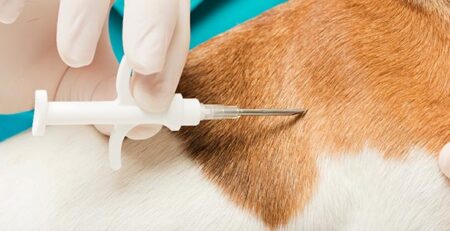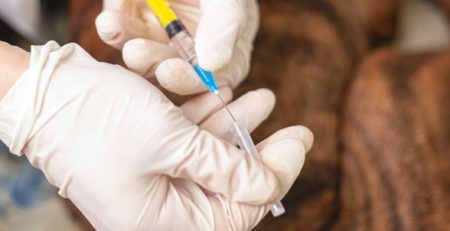Table of Contents
Dog allergic dermatitis: if it only occurs in spring, here are what allergens cause it, how to recognize it and treat it.
Spring allergic dermatitis in dogs is caused by elements in the environment, called allergens, which are typical for the period.
Allergy is a reaction of the body to a substance that is usually totally harmless, but is perceived as harmful and triggers an exaggerated and violent reaction of the immune system.
The agents that most affect the forms of spring allergic dermatitis in dogs can be of
plant origin
, pollens, or of
parasitic origin
, such as flea, tick and mosquito bites.
How to recognize spring allergic dermatitis in dogs?
Recognizing the symptoms of dog spring allergic dermatitis without confusing them with those of other disease situations is crucial to treating it.
The first indicator is the seasonality with which you observe the symptoms: if they occur only between March and May, it is very likely that your dog is really suffering from spring allergic dermatitis.
But what are the symptoms of this seasonal allergic dermatitis?
In the milder forms, the dog experiences itching: the constant licking he enacts to find relief causes irritation, redness of the skin, and thinning of the hair.
In the affected areas, scab formation and the occurrence of pustules is also common.
What parts of the dog’s body are most affected by allergic dermatitis?
Usually the affected areas are eyes, ears, under chin, muzzle, paws, belly, armpits, and inner thigh.
However, there is a far more serious form of allergy and it is the one that affects the dog’s respiratory system namely allergic asthma.
The alarming symptoms of allergic asthma
The most alarming symptom is related to the breathing difficulties the dog may experience.
If your dog sneezes frequently and has heavy, labored breathing, contact your trusted veterinarian immediately, who is the only one who can provide an accurate diagnosis and appropriate treatment.
Are there dogs predisposed to environmental allergic dermatitis?
Normally a dog is not born allergic but can become so.
In some dog breeds including Terriers, Dalmatians, Labradors, Irish Setters and German Shepherds, environmental allergic dermatitis seems to occur more frequently.
How long does spring allergic dermatitis last?
Allergy is a lifelong disease.
However, it is possible to keep the symptoms under control.
First, it is a good idea to have the dog undergo an intradermal test to identify substances in the environment to which it is allergic.
Next, the veterinarian will formulate a therapy that aims to reduce the dog’s sensitivity to the allergen.
What is intradermal testing for environmental allergies?
The intradermal test for environmental allergies is performed on the itchy dog after ruling out all other causes that might cause them, such as, for example, parasitic diseases or food intolerances.
The test requires brief sedation.
A rectangle of hair on the chest is sheared off and then extracts of the different substances (dust mites, pollens) to which the dog is potentially allergic are injected into the skin.
A few minutes after the test is performed, positive reactions may be observed in the form of pomphi (reddened swellings) at the injection site of the substance(s) to which the animal is allergic.
Having identified the allergen, the Veterinarian can formulate theimmunotherapy that the case requires.
What does immunotherapy consist of?
Immunotherapy is a treatment that involves administering increasing amounts of the substance to which the dog is allergic by subcutaneous injection.
The animal will then be given these allergens, responsible for the reaction, in slightly increasing concentration and intervals.
In most dogs, treatment leads to increased tolerance toward the allergens responsible for the condition.
Basically, the dog is made more tolerant to the substances that trigger the reaction.
Improvements can be seen as early as a few weeks after starting treatment.
In more than 70 percent of animals, this therapy leads to evident improvement or even complete remission of symptoms.
If you suspect allergic dermatitis, see your veterinarian as soon as possible who can make an accurate diagnosis and can recommend the appropriate treatment for your dog.
For examinations and consultations, book an appointment with the veterinary doctors on our Staff and in case of need and urgency, we remind you that Clinica La Veterinaria is always open, every day including holidays, and with First Aid service from 8 pm to 8 am.
For the joy of seeing them HAPPY.











